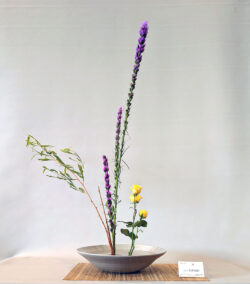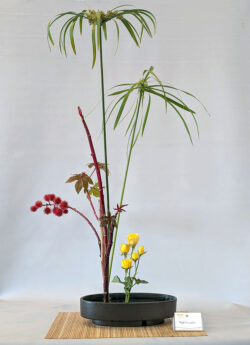Our sensei from the Illinois Prairie Chapter was the very experienced Jeanne Holy. She has studied several times in Japan and knows how to translate the knowledge she acquired there to her American students. She reviewed shoka isshuike and nishuike and discussed how sanshuike differs from these. Arrangers have a great deal more freedom to express themselves.
The participants worked on a kabuwake (divided roots) sanshuike with either soe or tai separated from shin. Materials could be all land type or all water or both; and woody and grassy materials can be any place in the arrangement. There is still a mizugiwa that must be observed in both parts. Since the arrangers have so much freedom, the resulting arrangements looked very different from each other…all of them beautiful.









